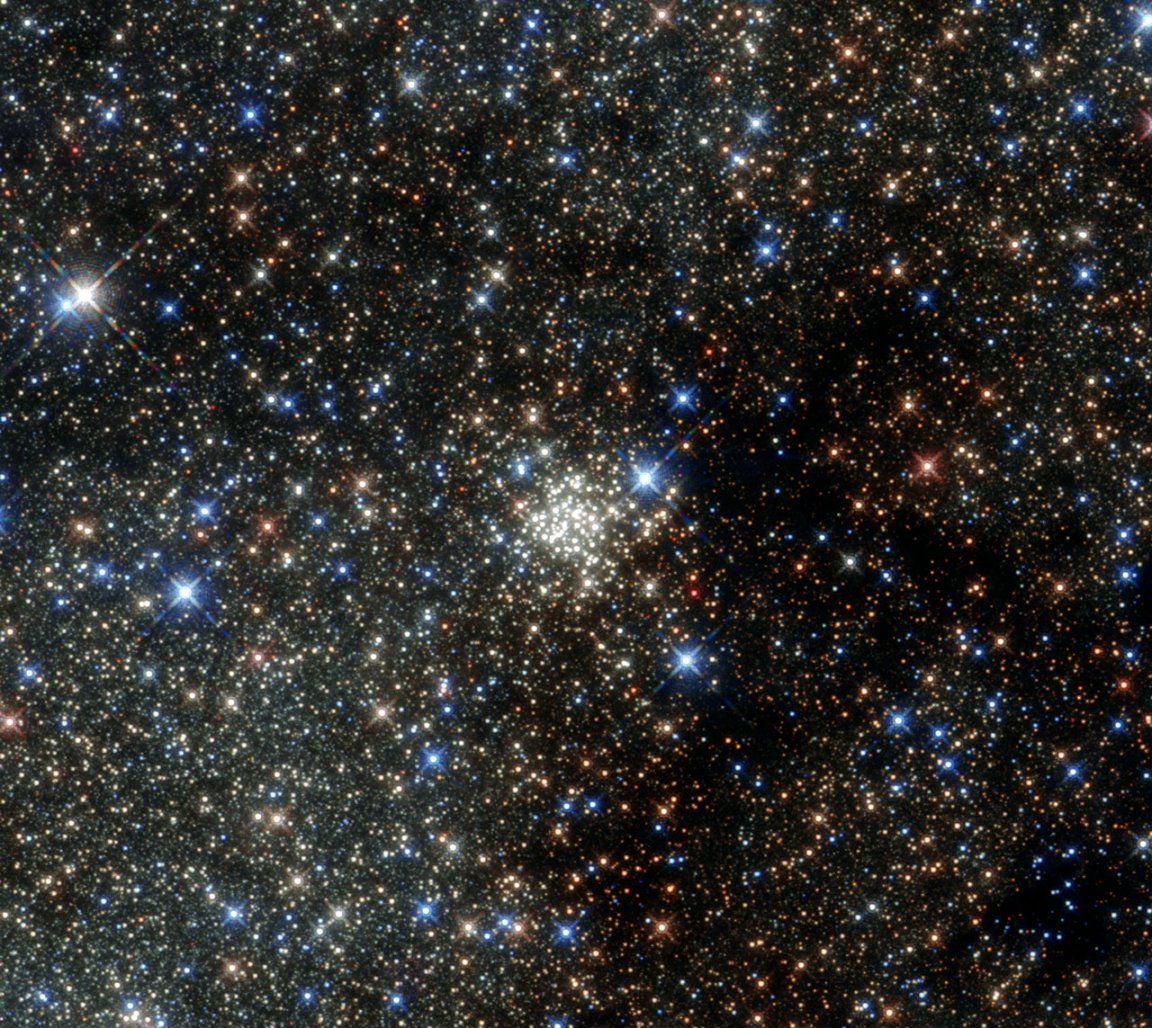

The Milky Way has an extensive number of stars—roughly 400 billion, by some estimates—with many of them gathered in groups, called clusters. They, in turn, are divided into two types: globular and open, This particular group—known as the Arches Cluster—is technically an open cluster, but it has another important distinction: It also happens to be the densest in our galaxy.
Found approximately 25,000 light-years from Earth toward the constellation of Sagittarius, the Arches Cluster lurks in close proximity to the Quintuplet Cluster. Both are relatively close to the center of the Milky Way, which is rife with extraordinary amounts of gas and dust. So much, a lot of stellar activity is obscured from sight, forcing astronomers to pierce the dusty veil with infrared astronomy tools.
This new image does just that, only it combines infrared data with that taken in the x-ray, and radio parts of the spectrum. Optically speaking, the cluster hardly registers, as demonstrated in this image taken by Hubble in 1999 (before Hubble was advanced as it is now).
To offer some perspective, the Arches Cluster is said to be so dense, nearly 100,000 stars would be crammed into a region equal in radius to the distance between the Sun and Proxima Centauri: the nearest star.
Around 150 are known to be the largest and brightest in our entire galaxy. Of course, that spells bad news for the stars themselves. The larger they are, the more quickly they burn through their lifeblood (in this case, we are referring to the fuel they need for nuclear fusion: hydrogen gas). Astronomers estimate that they will only live a few million years before going supernova: events that seed space with elements and materials necessary to the formation of even more stars. (See a larger image here)